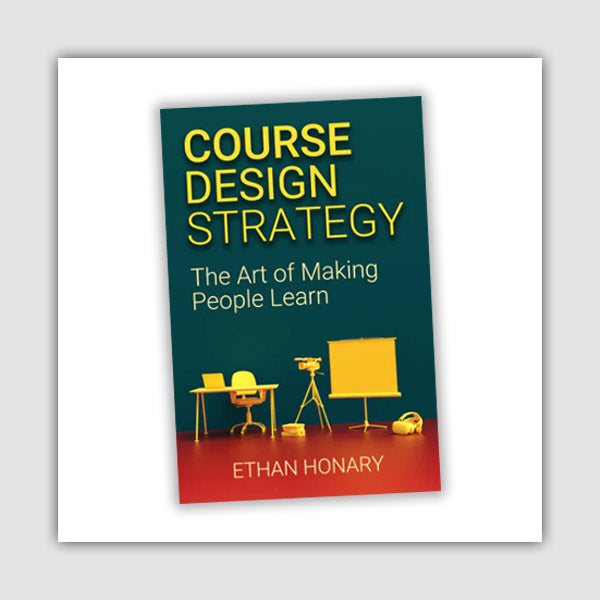Purpose
This exercise is designed to help participants understand the dynamics of cooperation and competition, trust, and decision-making under uncertainty, reflecting the principles of the Prisoner's Dilemma in a tangible, interactive format.
Objective
Participants will engage in a decision-making process where they must choose between cooperating with or betraying another player, with their choices directly impacting their personal gain as well as that of the other participant. The goal is to maximise personal gain while considering the potential actions of the other player.
What You Need
- Two participants (preferably unfamiliar with each other)
- $60 in one-dollar bills ($30 for each participant)
- Two envelopes
- A timer
Setup
- Choose two individuals from the class, ideally who do not know each other well, to simulate the uncertainty present in the dilemma.
- Provide each participant with $30 in one-dollar bills.
- Inform the participants they are accomplices in a hypothetical scenario, separated and unable to communicate. Their choices will simulate deciding to cooperate by staying silent or betraying by testifying against the other.
- Each participant decides independently how much of their $30 to place in the envelope for the other participant. They can choose to give any amount, including $0.
- Announce that the amount in each envelope will be doubled and given to the recipient, representing the benefits of mutual cooperation or the consequences of betrayal.
- Allow 2-5 minutes for the participants to make their decision on how much money to put in the envelope. They should do this in a way so the other participant or the class cannot see it.
- Without revealing their decisions, get participants to exchange envelopes.
- Get the envelopes from them, open the envelopes, double the amounts, and distribute the money accordingly. Let the class see what happened.
- Follow with a discussion and teach them about the Prisoner’s Dilemma.
Timing
Explaining the Exercise: 5 minutes
Activity: 20-30 minutes
Group Feedback: 15 minutes
Discussion
After completing the exercise, facilitate a discussion to explore the outcomes, decisions, and their implications:
- Reflections on Decision Making: Encourage participants to share why they chose to give the amount they did. Discuss the thought process behind their decision, considering the risk of betrayal and the potential for mutual gain.
- Analysis of Outcomes: Highlight that the optimal strategy for both players, from a collective standpoint, would be to cooperate fully by exchanging the entire $30, thus maximising the total gain when the amount is doubled. However, this requires absolute trust, which the dilemma intentionally complicates.
- Understanding Prisoner’s Dilemma: Explain how this exercise demonstrates the core challenge of the Prisoner’s Dilemma—individuals might not choose to cooperate even when it leads to a better collective outcome due to the uncertainty of the other’s actions and the temptation to maximise individual gain at the potential expense of the other.
Outcomes in Numbers
Let’s explore the outcomes for each of the four cases in the Prisoner’s Dilemma, considering each player starts with £30 and decides whether to cooperate (give their money) or betray (keep their money). The given amount will be doubled for the recipient.
- Both Cooperate: Each gives £30, which is then doubled for the recipient. Therefore, each player ends up with £60 (£30 given away, but they receive £60 in return).
- Both Betray: Each decides to keep their £30, not giving any amount to the other. Consequently, both players end up with their initial £30, as there is no exchange or doubling.
-
One Cooperates and the Other Betrays (Player A Cooperates, Player B Betrays):
- Player A, who cooperates, gives £30, which means they are left with nothing since Player B gives nothing in return, and the £30 given away is doubled and goes to Player B.
- Player B, who betrays by giving nothing, keeps their initial £30 and receives the doubled amount of £60 from Player A's cooperation, ending up with £90.
-
One Cooperates and the Other Betrays (Player B Cooperates, Player A Betrays):
- If we switch the roles, Player A, now the betrayer, ends up with £90, keeping their initial £30 and receiving the doubled amount of £60 from Player B's cooperation.
- Player B, now the cooperator, ends up with nothing, as they gave away their £30, which was doubled and given to Player A.
Summary
- Both Cooperate: Each ends up with £60.
- Both Betray: Each ends up with their initial £30.
- One Cooperates, One Betrays: The cooperator ends up with nothing (£0), while the betrayer ends up with £90.
This illustrates the core dilemma: while mutual cooperation yields a good outcome for both, the temptation to betray and maximise personal gain can lead to a significantly better outcome for one party at the expense of the other, or if both betray, a neutral outcome where no one gains additional value.
This exercise is a powerful tool for illustrating the complexities of human decision-making in situations where individual and collective interests intersect, providing valuable insights into the nature of cooperation, trust, and competition.
Real-World Applications
Having learned about prisoner’s dilemma, it is ideal to follow this with a structured discussion on what this is good for and where it can be used.
To make it interesting, rather than telling the participants about potential applications, which they may then forget, ask them to make it themselves. So this could be the second part of this exercise as it will take time to go through.
- Divide them into groups of 2 or 3.
- Ask each group to discuss potential scenarios and applications and then write it down.
- Make sure they create a table with all the four possible outcomes and the rewards associated with each choice.
- You can optionally give the example shown below to give them an idea of what you expect.
- After about 10 minutes bring them back together and get each group to share their scenarios.
- Ask other groups to provide feedback. Extend the conversation to real-world scenarios where similar dilemmas occur, such as in business negotiations, environmental agreements, and personal relationships.
- Discuss how understanding and trust can mitigate conflicts and lead to mutually beneficial outcomes.
- Ask the class which scenario they found most interesting.
Prisoner’s Dilemma Scenario: The Galactic Expedition
Background
Imagine two renowned space explorers, Captain Vega and Commander Orion, part of a galactic expedition team, have discovered an ancient alien artefact on a remote moon. The artefact is said to contain knowledge that could greatly benefit humanity. However, they also uncover a security mechanism that could potentially destroy the artefact if not carefully navigated.
The Dilemma
The explorers have a choice: they can either cooperate by sharing their findings and working together to safely unlock the artefact’s secrets, ensuring both receive equal credit and rewards; or they can attempt to betray the other by securing exclusive access to the artefact, hoping to gain all the glory and benefits for themselves.
Unfortunately, their communication devices have been damaged, preventing them from coordinating their actions or knowing what the other has decided (just like in Hollywood movies, because no such adventure can be straight forward!).
Options
- Cooperate: Each explorer decides to trust the other, sharing all their research and working together to unlock the artefact. If both choose this option, they successfully access the artefact's knowledge, doubling the rewards for humanity and sharing the glory equally.
- Betray: An explorer decides to attempt exclusive access by manipulating the artefact's security mechanism, hoping to leave the other out of the discovery.
Outcomes
- Both Cooperate: The artefact is safely unlocked, and its secrets are revealed. The explorers are hailed as heroes, sharing the rewards and recognition equally.
- Both Betray: Their attempts to manipulate the security mechanism without cooperation lead to the artefact’s destruction. They return to Earth with nothing but tales of what could have been, receiving no rewards.
- One Cooperates and One Betrays: The betrayer successfully gains exclusive access to the artefact, receiving all the rewards and glory. The cooperator is left with nothing, their failure made public, damaging their reputation and career.
Soft Skills Training Materials
Get downloadable training materials
Online Train the Trainer Course:
Core Skills
Learn How to Become the Best Trainer in Your Field
All Tags
Training Resources for You

Course Design Strategy
Available as paperback and ebook

Free Training Resources
Download a free comprehensive training package including training guidelines, soft skills training activities, assessment forms and useful training resources that you can use to enhance your courses.

Our Comprehensive Guide to Body Language

Train the Trainer Resources
Get Insights - Read Guides and Books - Attend Courses
Training Materials
Get downloadable training materials on: Management Training, Personal Development, Interpersonal Development, Human Resources, and Sales & Marketing














2 comments
Ethan Honary
Happy that our content has been useful for you Brigitte.
Let me clarify this exercise a bit further. It is based on Prisoner’s dilemma and game theory where each prisoner has to make a choice between two options: to testify against the other or to remain silent. This leads to 4 possibilities. For each decision they get different rewards. Let’s say the reward is in tokens.
- A and B cooperate and stay silent: each get 1 token
- A testifies and B cooperates: A get 3 tokens and B gets nothing
- A cooperates and B testifies: A gets nothing and B gets 3 tokens
- A and B testify: A and B get 2 tokens
The point of this setup, and it’s immense significant in the science of decision making, is that each prisoner has an incentive to testify against the other to get a bigger reward. However, if they both go for this choice (to be greedy), they both lose more than if they do not testify.
So, in this exercise we are simulating the same reward effect with envelops, cash and the back story of explorers. Cooperate is the same as the above case for prisoners with both getting a little reward. Both cooperate is like getting 1 token / $30 each. Betray is the same at testifying against each other as above, where one gets all the reward and the other gets nothing (getting nothing or 3 tokens / getting no cash or $90). If they both betray (testify), they get 2 tokens each, or $60 as in the exercise.
The exercise is moderated by the trainer. The amount of cash in the envelopes is updated by the trainer as we are effectively simulating the decision table of the prisoner’s dilemma. It is as if the trainer is the judge hearing out the prisoners and awarding them the payoff.
Hope this clarifies and looking forward to hear about the results when you run it.
Brigitte
I am pleased to be receiving mails from Skills Converged again. I was following you for some time and bought some resources too from you. I like your approach.
However, I sometimes felt and now feel it again that the instructions are not very clear.
In this scenario, what is the relation between cooperating or betraying and the money they are placing in the envelope ? (The 1st paragraph and the 2nd copied below)
Why is the amount doubled ? Who doubles it ? Is doubling the benefit of mutual cooperation or of betrayal ? (the 2nd and the 3rd paragraph copied below)
What is the meaning of placing the money and choosing how much to place in the envelope ?
Inform the participants they are accomplices in a hypothetical scenario, separated and unable to communicate. Their choices will simulate deciding to cooperate by staying silent or betraying by testifying against the other.
Each participant decides independently how much of their $30 to place in the envelope for the other participant. They can choose to give any amount, including $0.
Announce that the amount in each envelope will be doubled and given to the recipient, representing the benefits of mutual cooperation or the consequences of betrayal.
Thank you for clarifying.
Leave a comment
All comments are moderated before being published.
This site is protected by hCaptcha and the hCaptcha Privacy Policy and Terms of Service apply.